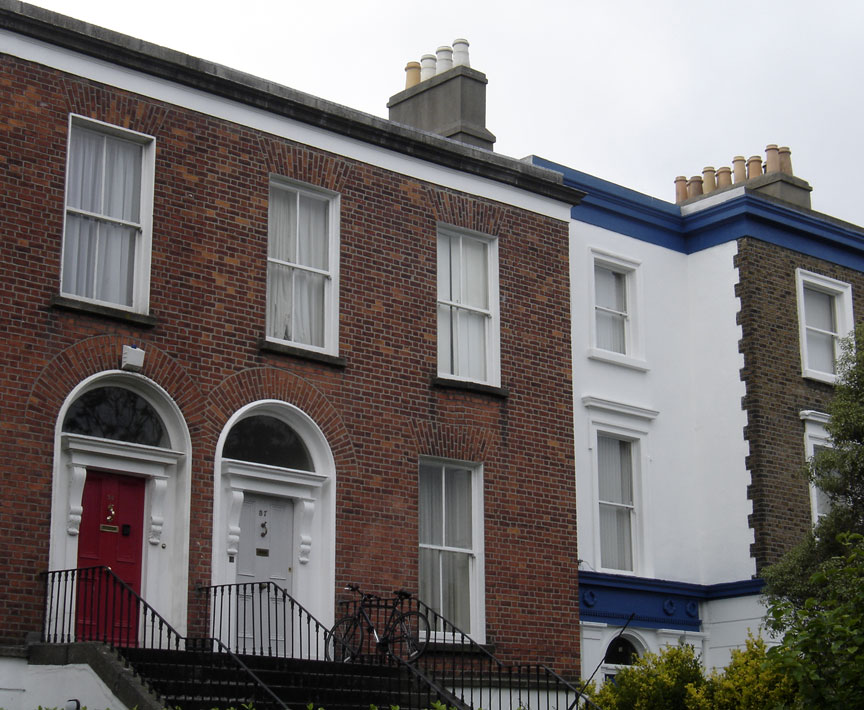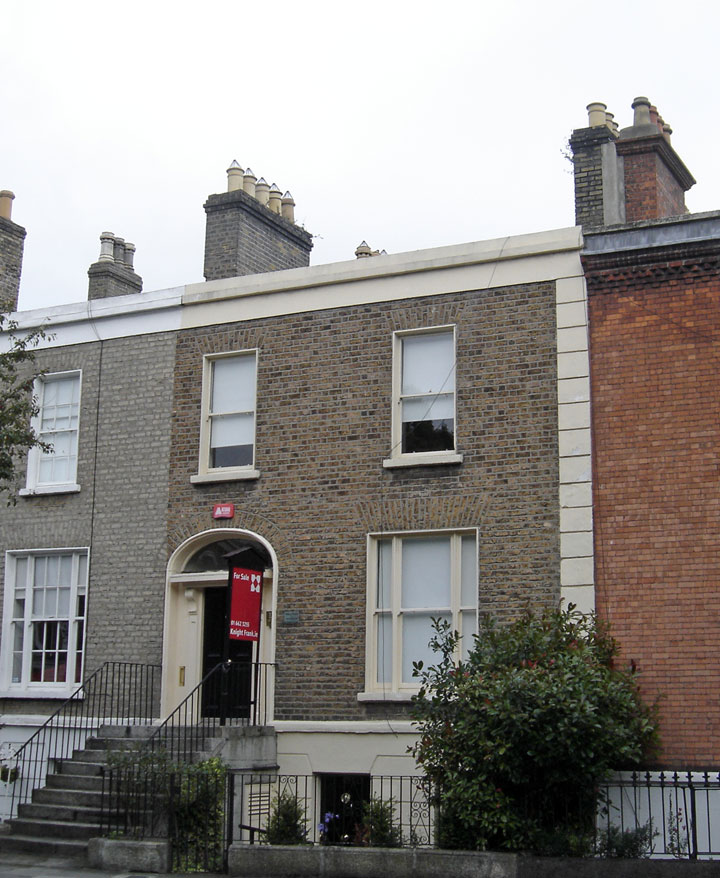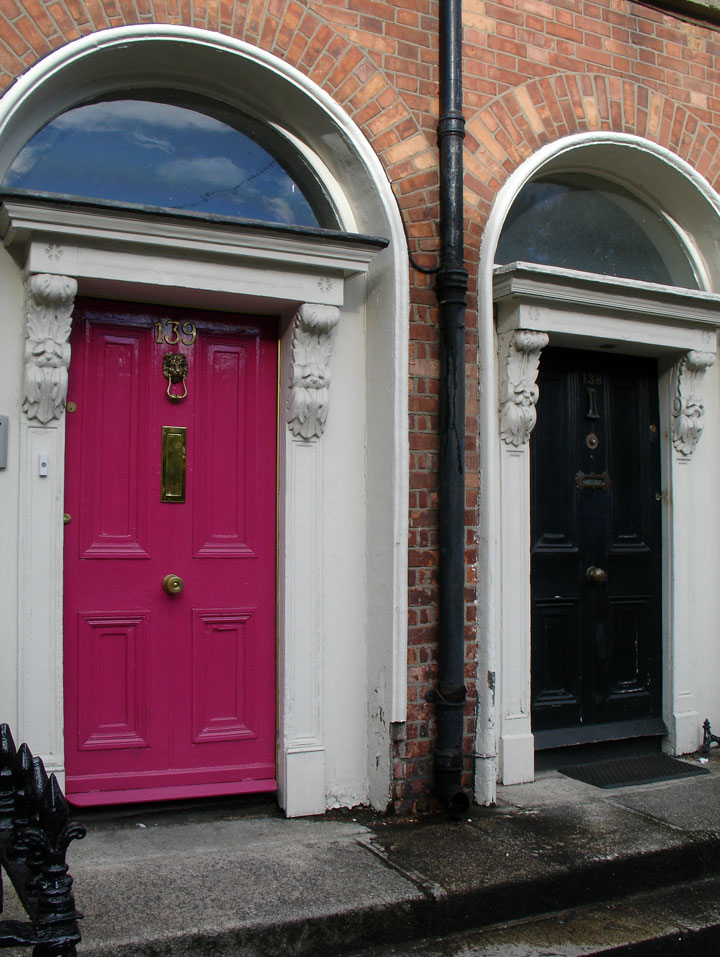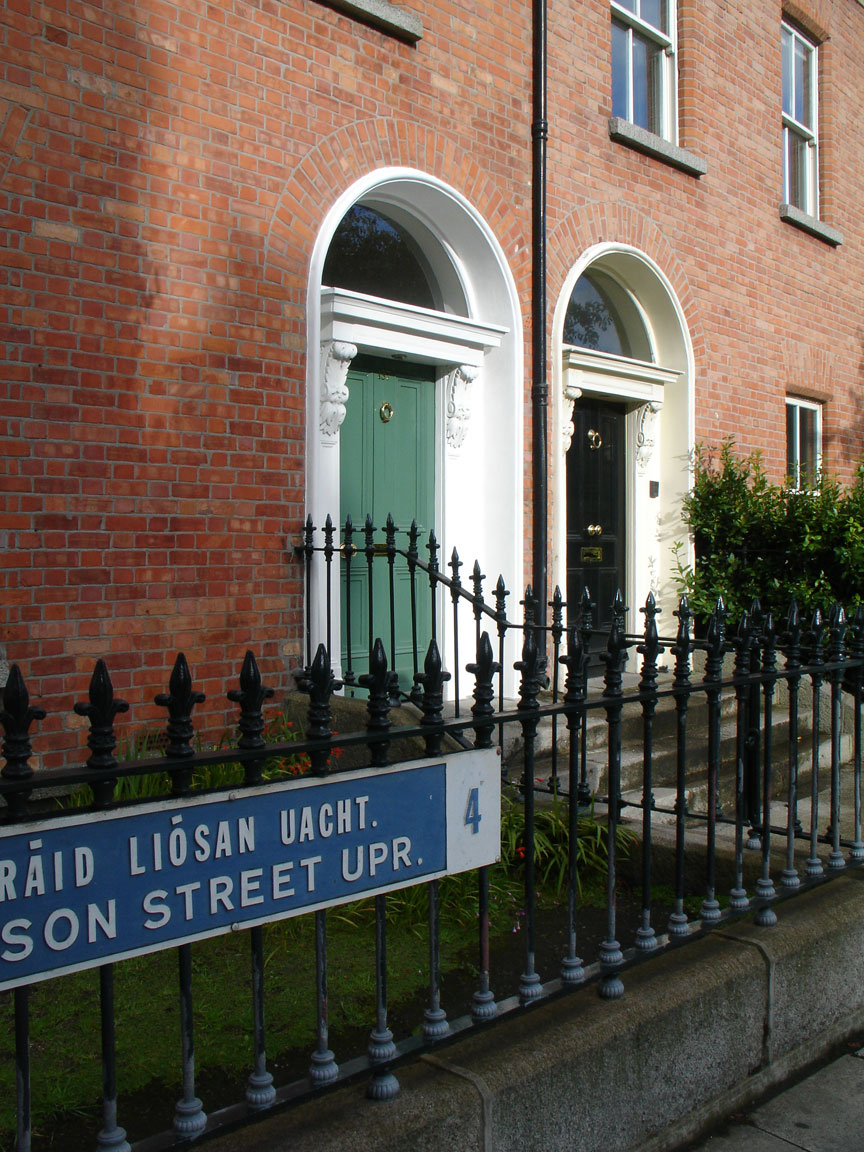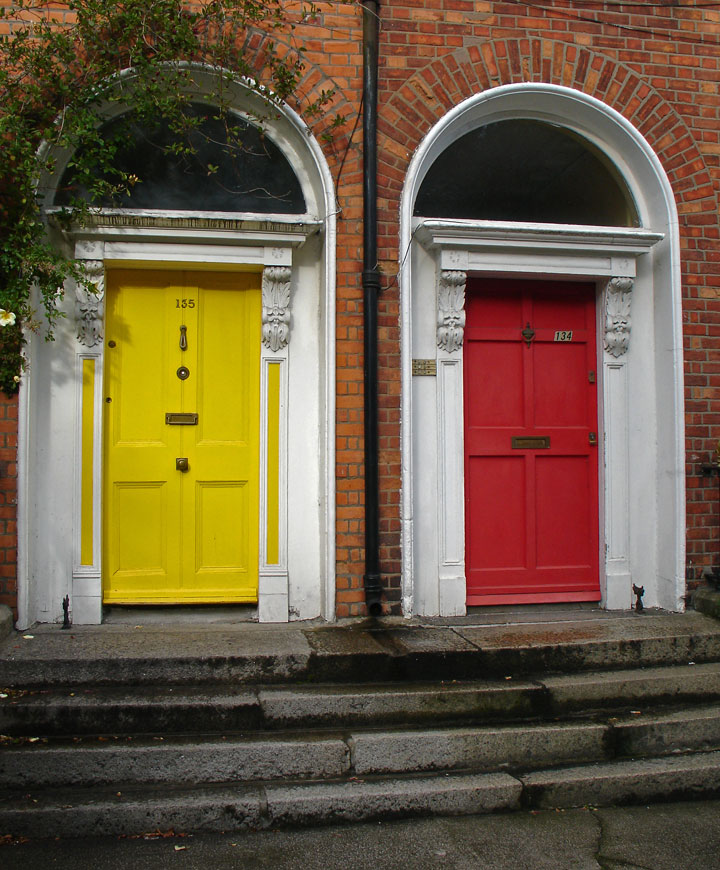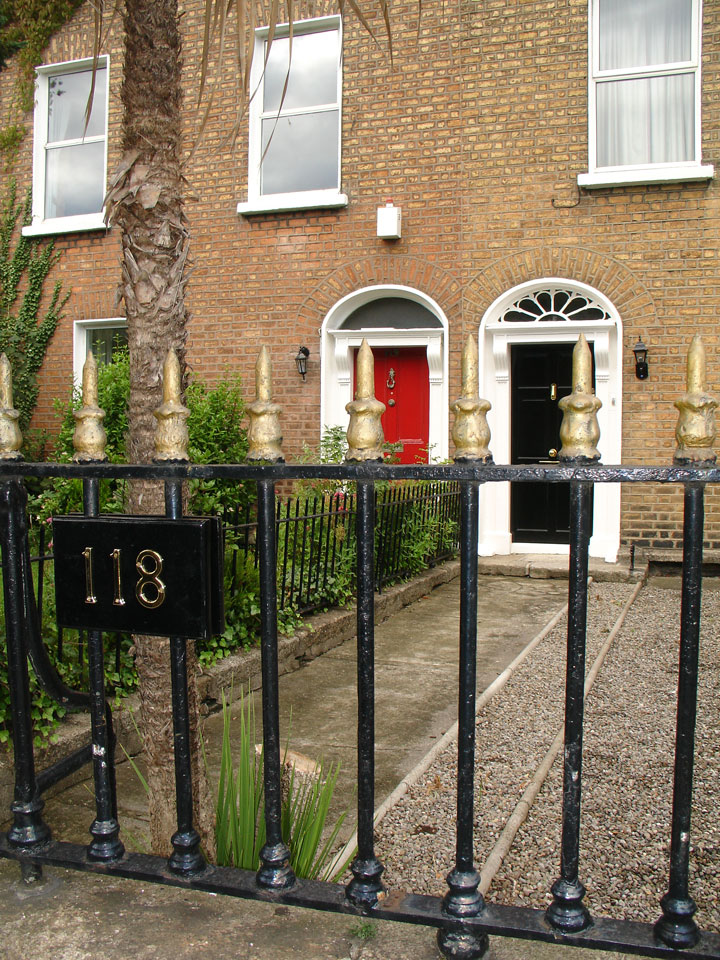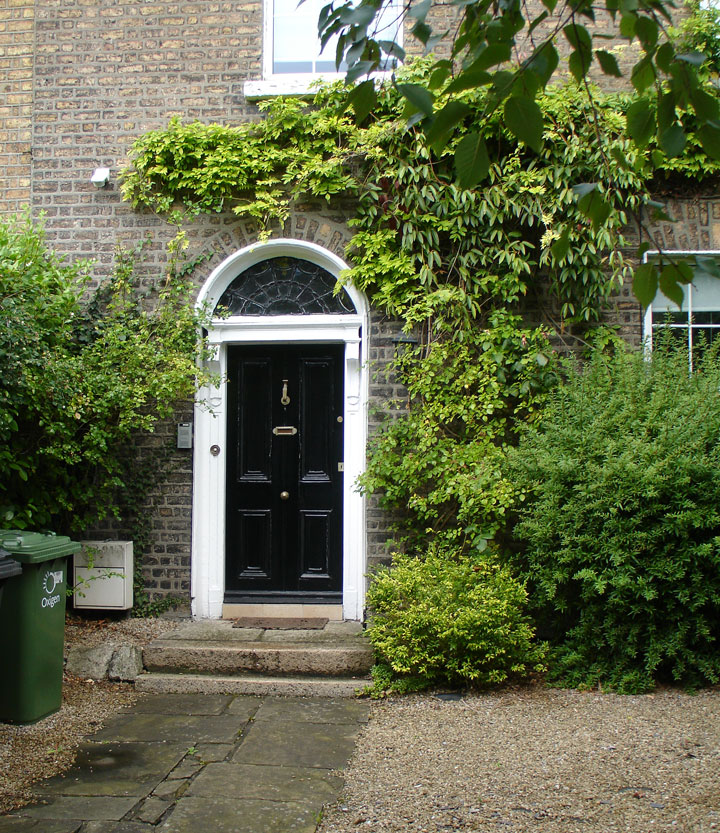

Dublin Georgian Residential Doors
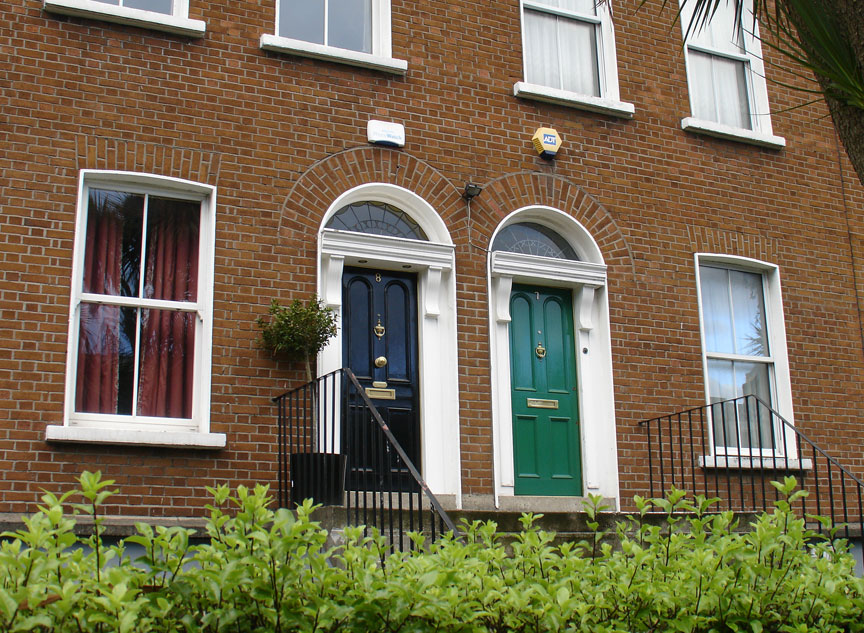
It was 1970 around St. Patrick’s Day that a colorful collage of Dublin doors appeared in the window of the Irish Tourism offices on Fifth Avenue in New York City. People on their way to watch the parade were stopped in their tracks by what they saw. Drawn by the uniqueness of the image, many of them went inside to find out where they could get a copy. There were so many requests that Joe Malone, North American Manager of Bord Fáilte at the time, commissioned the poster that has since become an icon of Ireland.
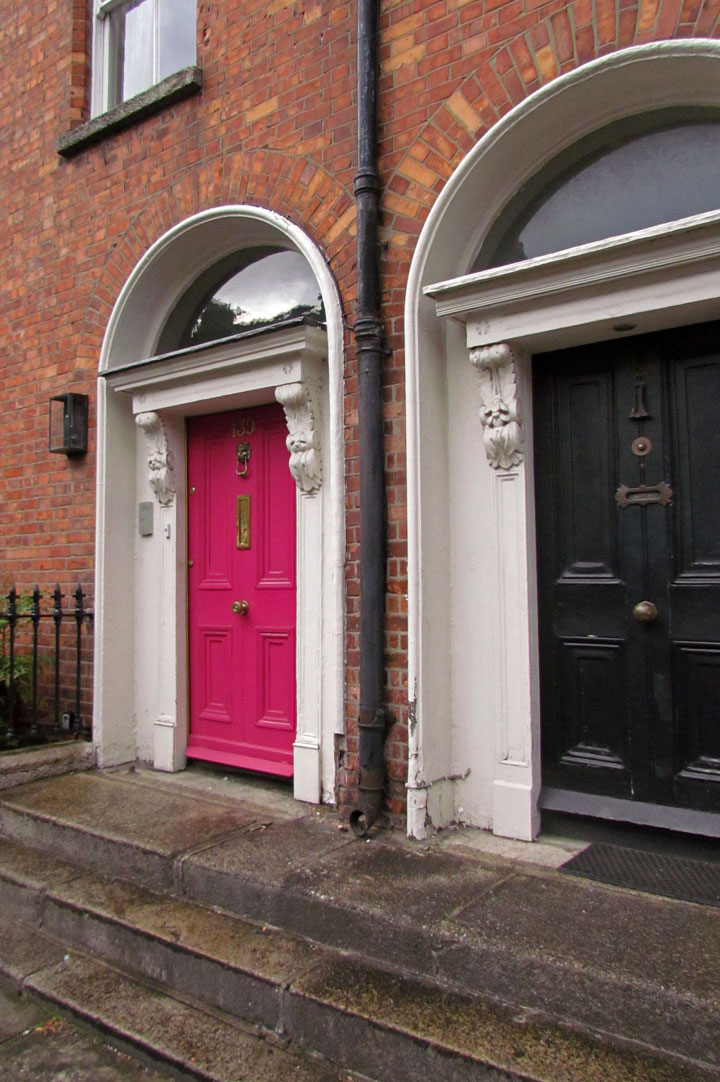
All of these now-famous portals are found on the Georgian town houses south of the Liffey and are an established visual attraction in the capital. A prime example is No. 10 Fitzwilliam Street, part of what was once the longest unbroken line of Georgian houses in Europe and home to Longfield's, one of Dublin's most distinguished small hotels, perhaps best exemplified in its excellent restaurant Kevin Arundel at No.10, affectionately known as No.10 to the business lunch set and to Dubliners dining out.
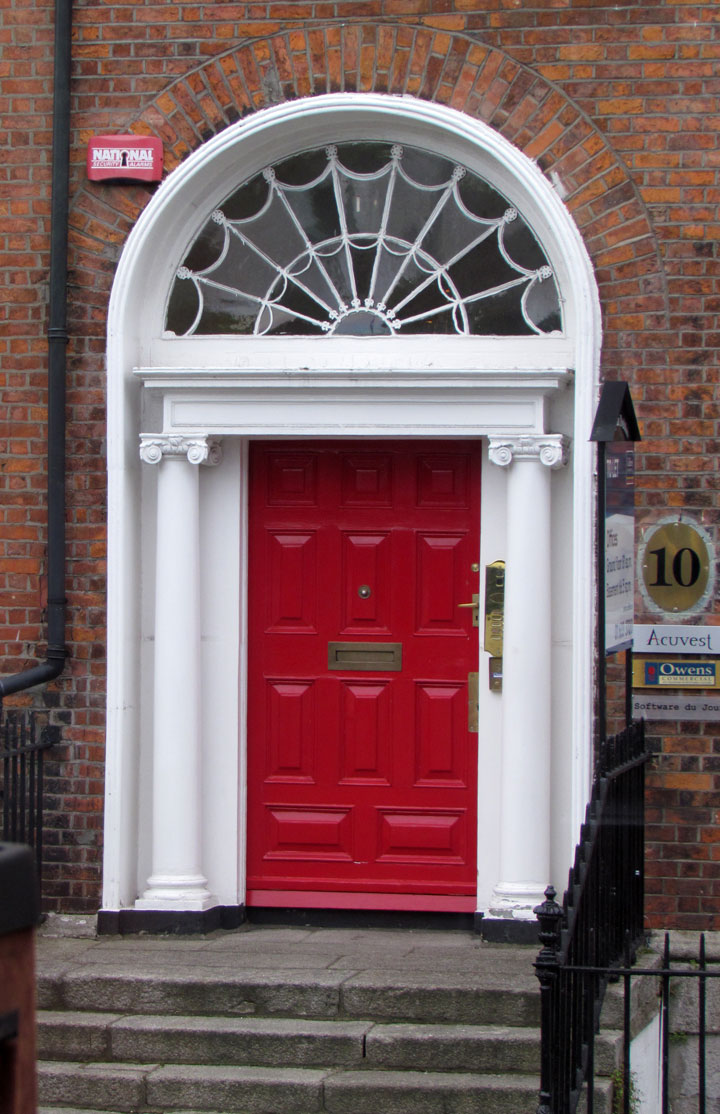
The houses and the doors are all
found gracing Dublin’s equally as famous Georgian Squares, which were laid out
during the Hanoverian period in the 1700s as the city attracted new wealth and
rejuvenation.
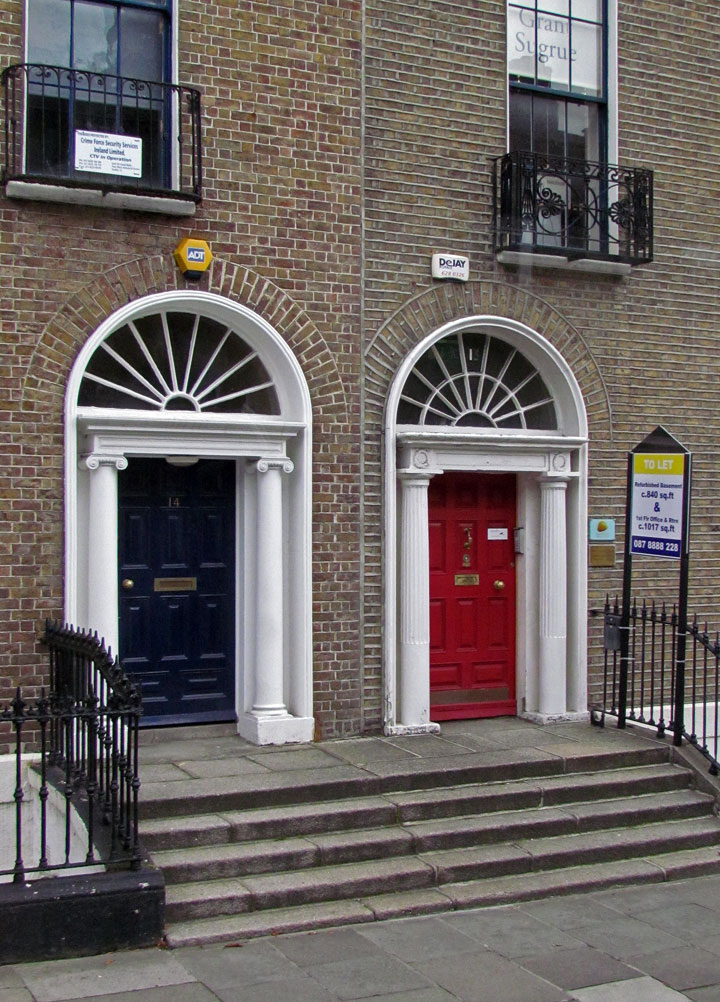
Before then, Dublin was considered no more than a provincial town in the British Empire, but from about 1715, anti-catholic penal laws were relaxed, which allowed many middle-class Catholics to establish themselves in trade.
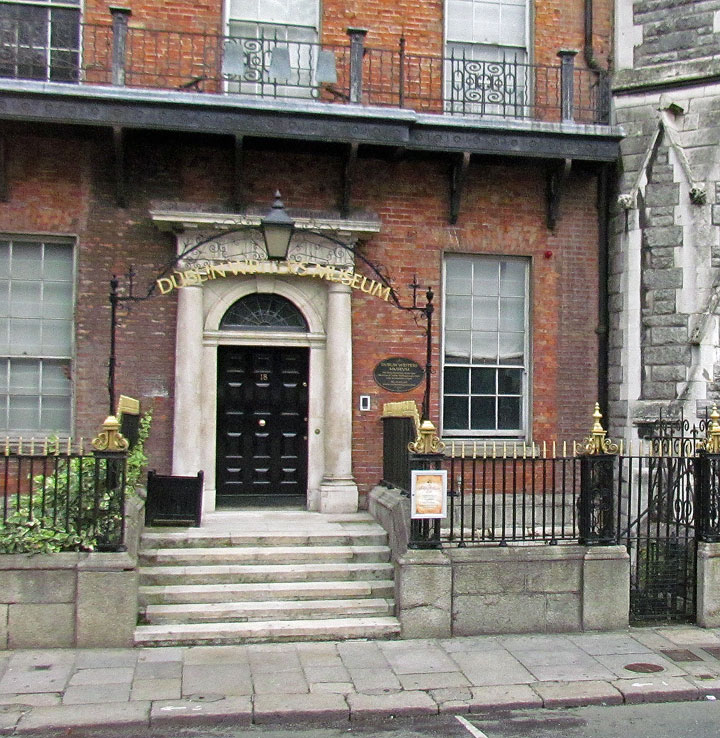
At the time, Dublin was ruled by members of a Protestant upper class, descendants of English invaders from Norman, Elizabethan and Cromwellian times. Known as the Protestant Ascendancy, these settlers began to push for reforms, better conditions and rights for Catholics, and for greater autonomy for the Irish Parliament.
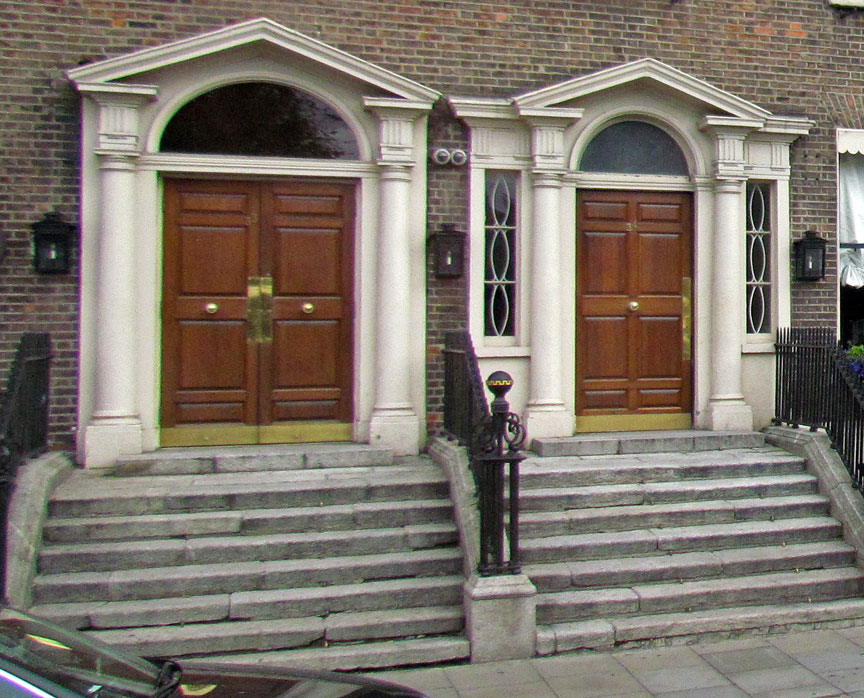
Although politically the results
wouldn’t last, economically Dublin rose to become the largest city in the
British Empire after London, and with prosperity, Dublin’s Protestants began to
build their elegant new Georgian homes beyond the walls of the medieval town.
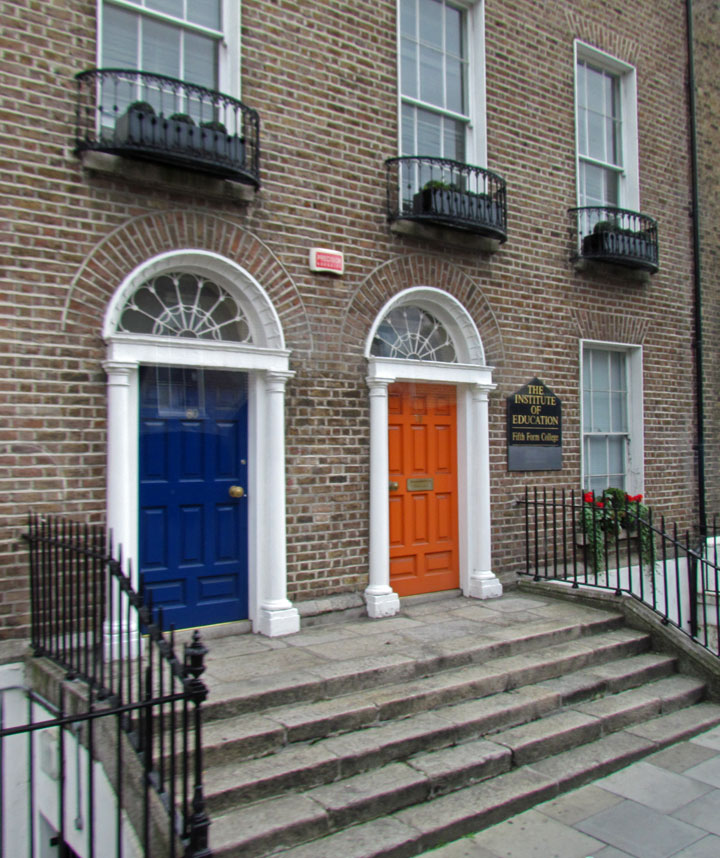
Developed by the Fitzwilliam Estate
and named Merrion after the second Viscount Fitzwilliam of Merrion, the first
project of the Fitzwilliam Estate was Merrion Street; it was quickly built on
and plans were made for Merrion Square using Merrion Street as one side.
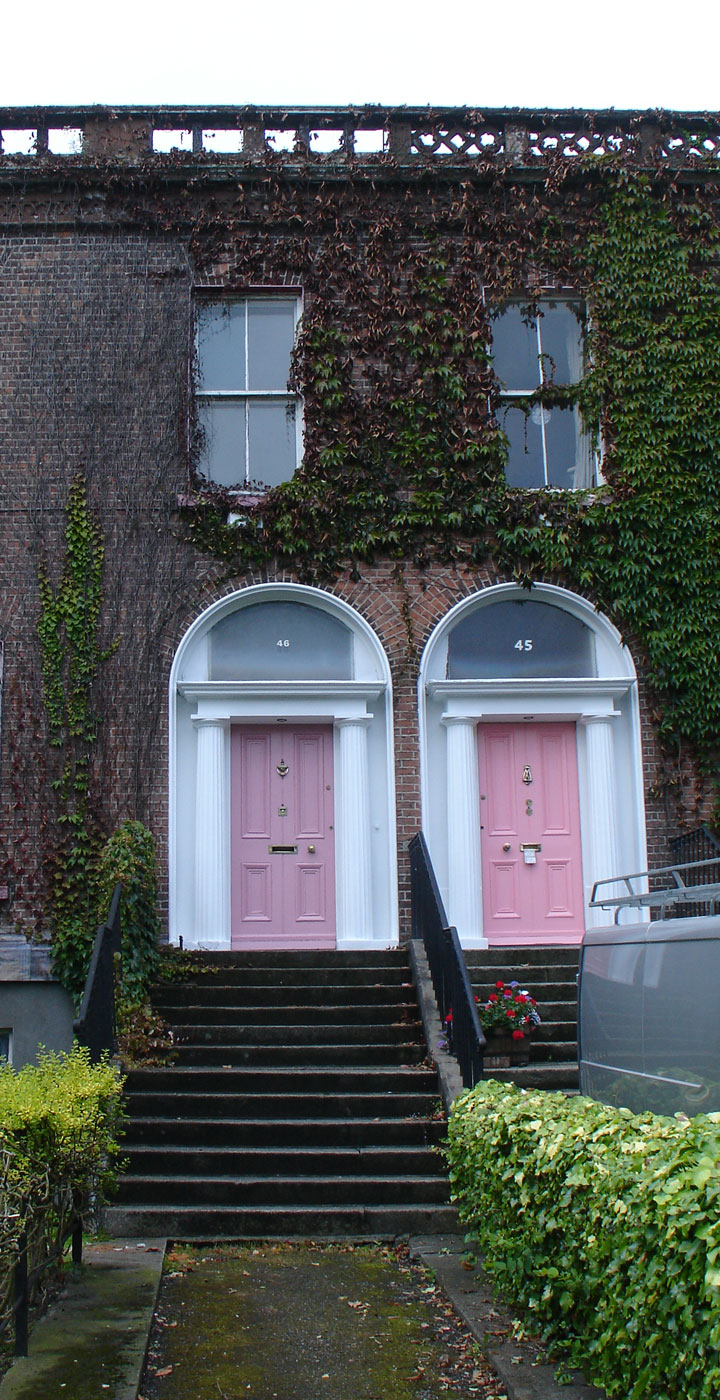
The design of the houses on Merrion
Square was typical of the Georgian houses of Dublin and in particular the houses
of the Fitzwilliam Estate covering Fitzwilliam Street and Square, Mount Street
Upper and Merrion Square. The external visual integrity and uniformity of the
micro-Georgian city masked a wealth of variety and decoration that adorned the
interiors of the buildings. Many contained magnificent ceiling plasterwork,
ornate fireplaces and staircases. And many still do. But did you know that at
one time, all of the exterior doors were the same color? Research didn’t turn up
exactly what color that was - but it was most likely a neutral shade.
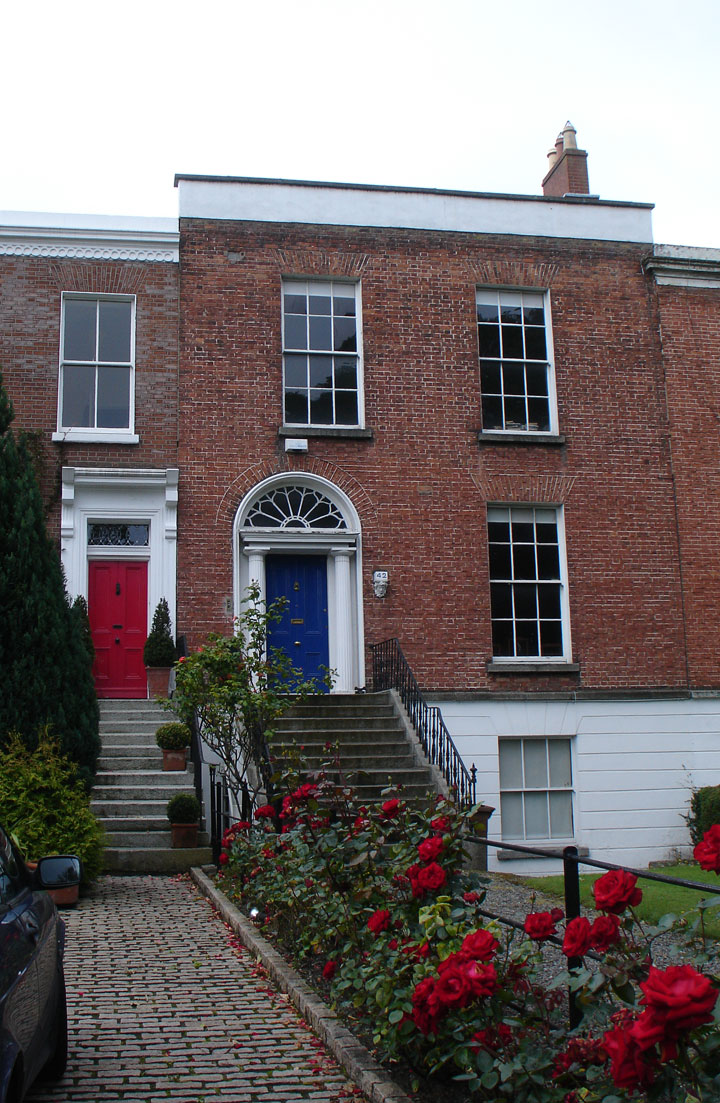
If you’ve taken an escorted tour of
Dublin you might have been told by your guide that the famous writer George
Moore lived next to another famous writer, Oliver St John Gogarty, in Ely Place.
Both were a bit eccentric and it’s said that Moore painted his door green so
that the drunken Gogarty would not come knocking on it, thinking it to be his
own door. Gogarty then painted his door red so that the drunken Moore would not
come knocking on his door! And that’ supposedly is what started the fashion. The
truth is a lot less colorful.
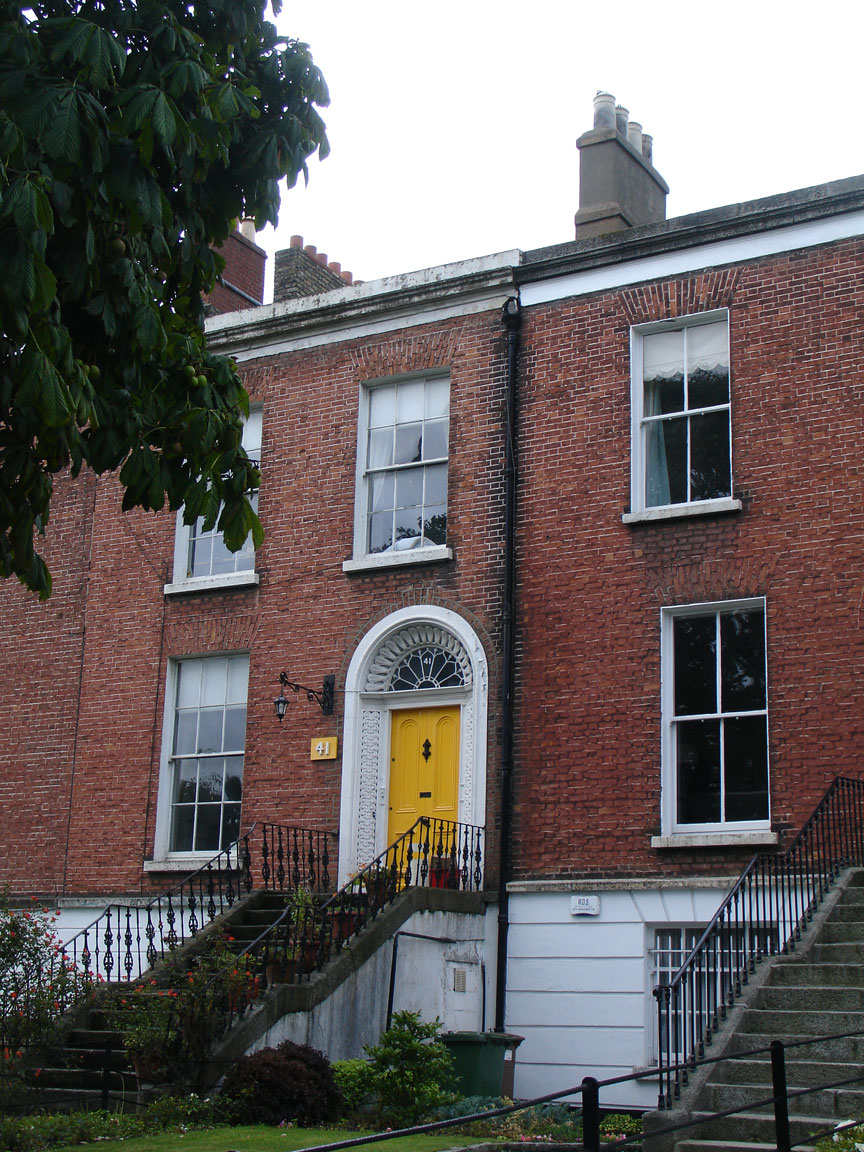
According to the history books, George Moore was generally abstemious, drinking only a little wine with dinner and repelled by displays of public drunkeness. More relevant to our story however, was that George’s home and those of his neighbors were built in the Georgian style and the exteriors had to adhere to strict architectural guidelines.

In order to set themselves apart, the former residents of Georgian Dublin painted their front doors whatever color they fancied (“red was more durable”), added ornate knockers, elegant fanlights above the door, and wrought iron boot scrapers, near the the entrance. Decorated iron coal-hole covers were often embedded in the pavement. Today, most of the houses have their original fanlights, some still with box shaped glass recesses in which a lamp would have been placed. There are also examples of a simple security device in the form of a fan-shaped arrangement of spikes set into the wall beside a window to foil burglars. Sometimes a similar device was inserted inside the fanlight.
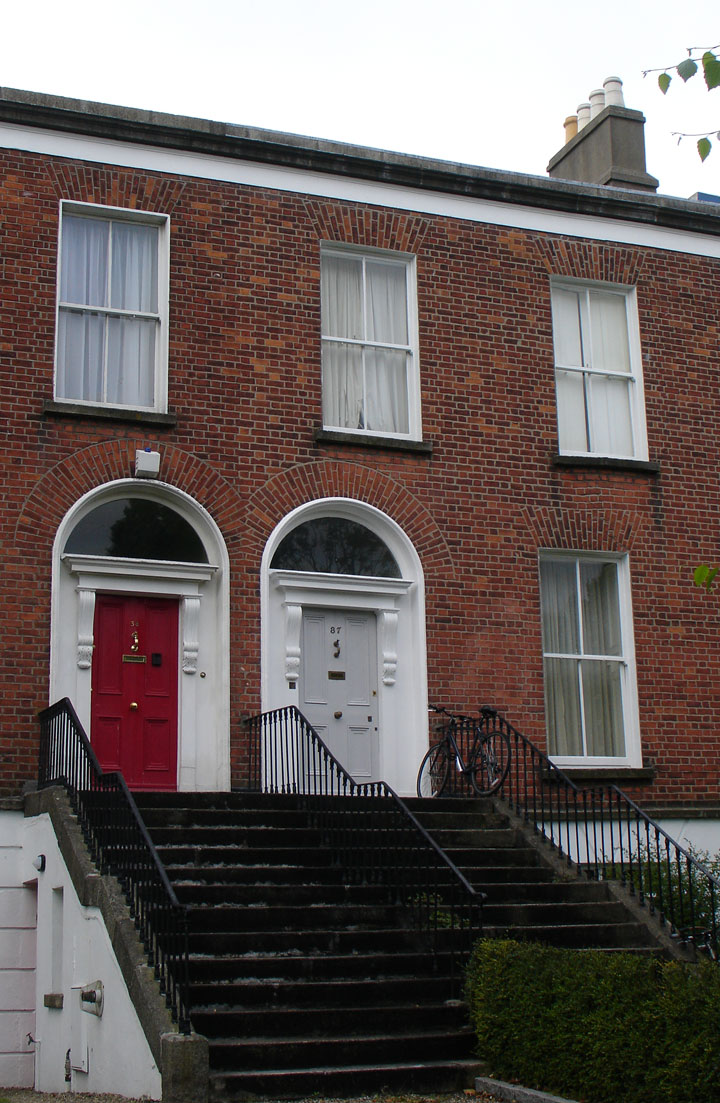
From the 1950s onwards, Georgian Dublin came under concerted attack by the Irish Government's development policies. Whole swathes of 18th century houses were demolished, notably in Fitzwilliam street and St Stephen's Green, to make way for utilitarian office blocks and government departments.
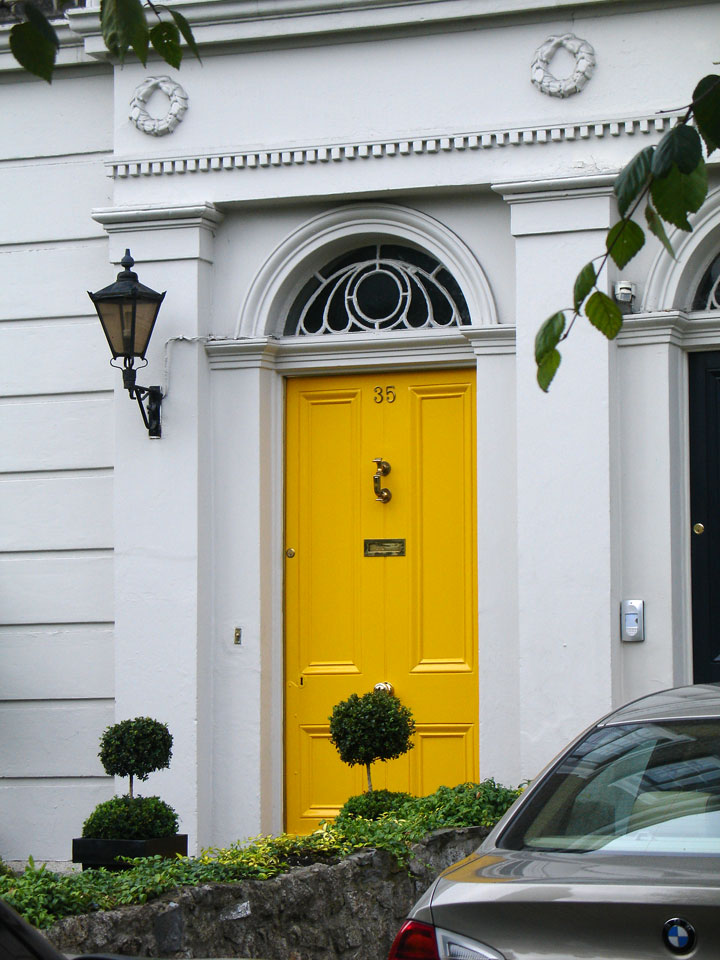
Much of this development was
encouraged by Ireland's dominant nationalist ideology of that era, which wanted
to wipe away all physical reminders of Ireland's colonial past. For example, in
the 1960's, more than 20 town houses were destroyed to make way for the
headquarters of the Electricity Supply Board. However, thanks to a concerted
effort by historians, architects, preservationists and the irish Tourist Board,
the architectural carnage came to a halt. For while Ireland’s claim to having
the longest unbroken line of Georgian row houses was now reduced to rubble, the
Irish government began to wake up to the rich potential of tourists with their
cameras who were drawn like magnets to the squares - and all because of "The
Doors of Dublin."

And so we come full circle to the
present day and the origins of a poster which has become one of the most popular
of Irish images. Since its debut more than three decades ago, there have been
numerous attempts to copy the concept. Indeed, poor imitations are available
just about anywhere posters are sold. But there remains only one original "The
Doors of Dublin." How the idea came about is disarmingly simple - yet brilliant.
As most good ideas are.
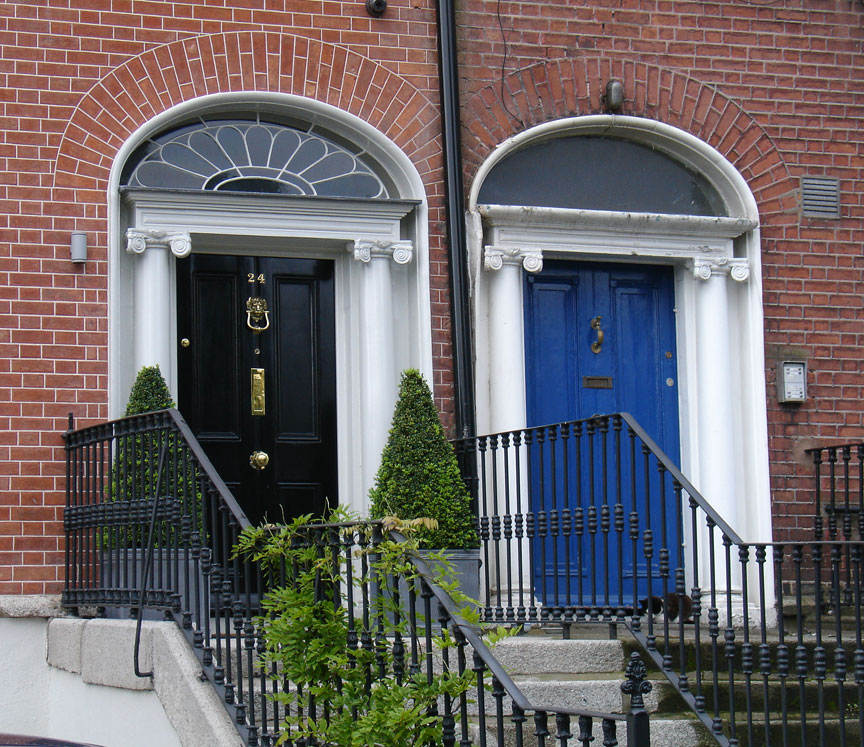
Bob Fearon, head of an ad agency in NYC, was in Dublin on a commercial shoot. He was strolling back to his hotel and passed through Merrion Square and then Fitzwilliam Square. Struck by the symmetry and beauty of the Georgian doorways, he took photos of forty or more of them with the idea of making an art collage for himself. On his return to NYC, he went ahead with the collage and showed it to Joe Malone who thought it would be perfect for his Irish Tourism office display window on St. Patrick’s Day. The Irish Tourist Board thought so, too and bought the rights to the collage. Bob then added the poetic alliterative copy. The end result was a poster which became a history-making award winner all over the world.
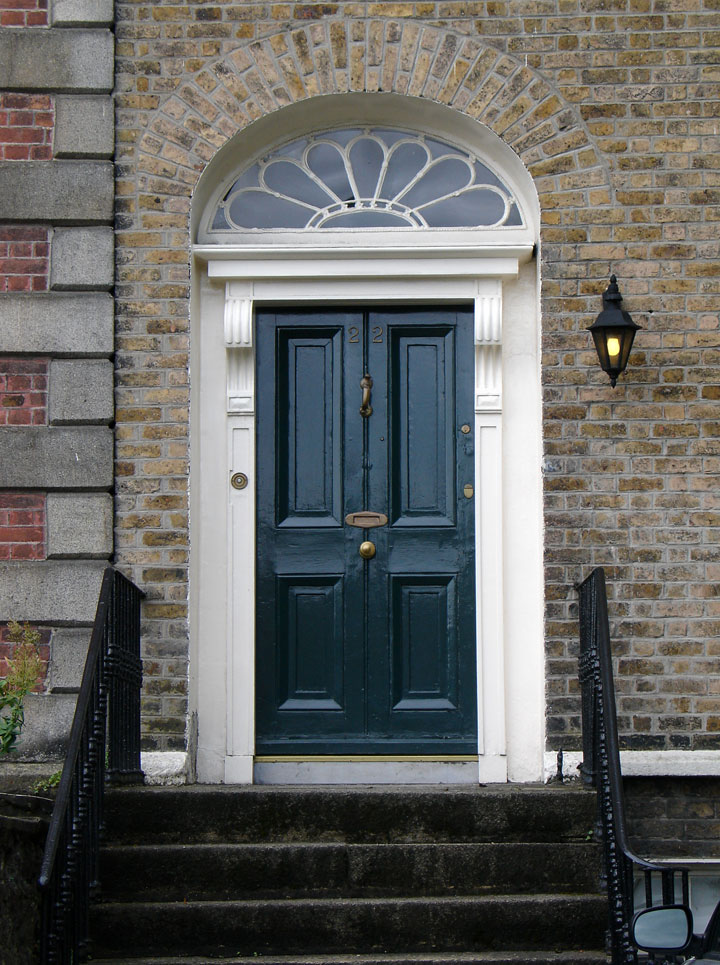
Bob and Joe have long since retired from their respective careers, but they still maintain an avid interest in promoting the best of Ireland. Which is why they got the Irish Tourist Board's blessing to bring the poster out of retirement. Their special edition is printed on Supreme Gloss, a bright white, 100 lb stock which magnificently sets off the individual characteristics of all 36 doors.
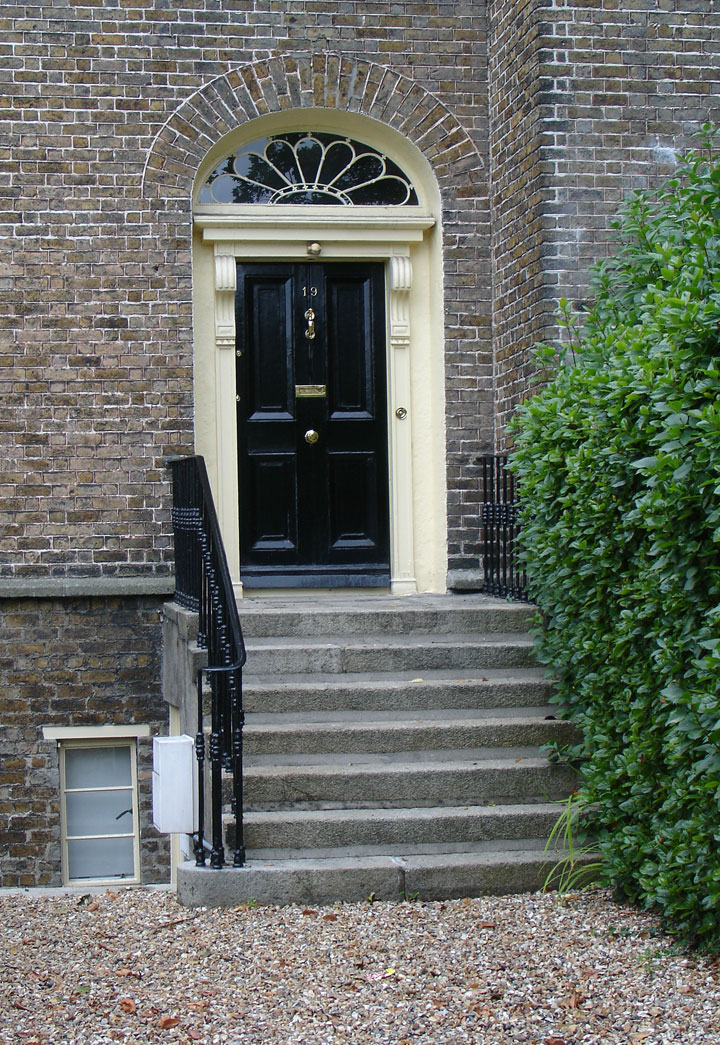
And since these are images of doors taken in and around FitzWilliam Square, you might wonder who some of the past residents were - and who lives there now.
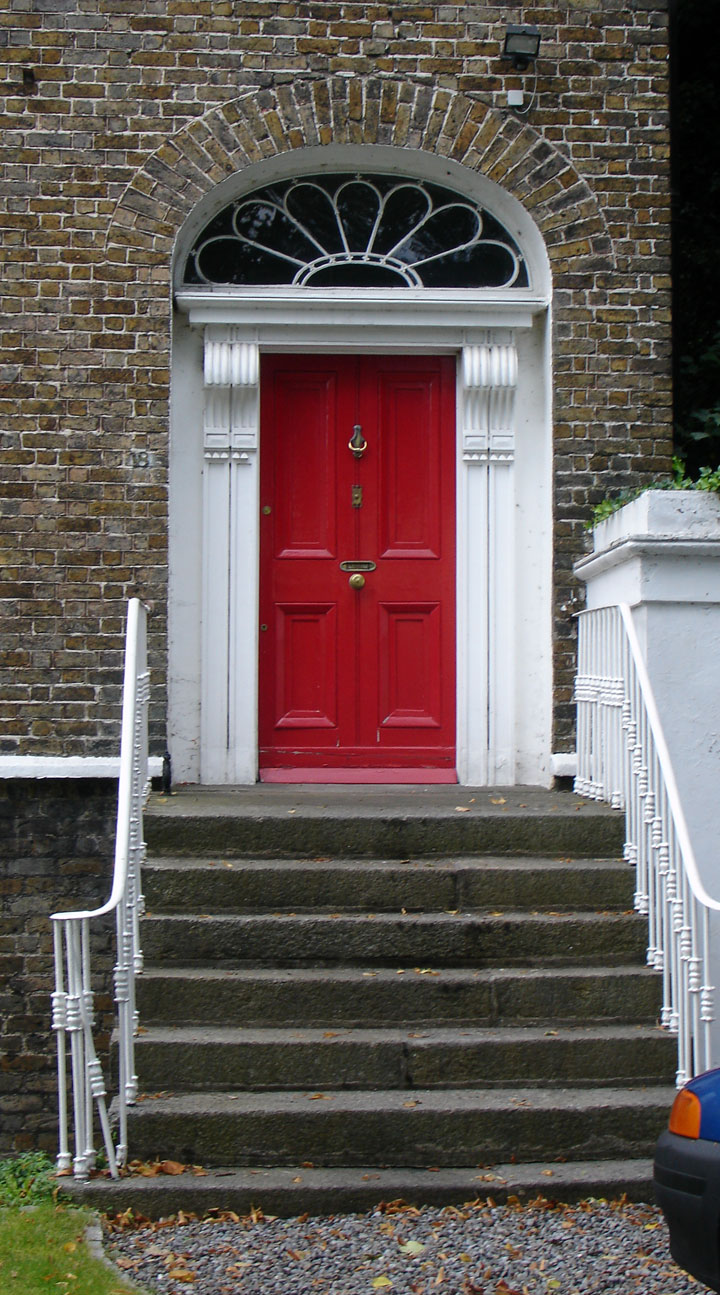
The earliest houses in the square date from as far back as 1714, but the ensemble was not completed until 1830. The square thus neatly spans the entire Georgian period from the accession of George I to the death of George IV. It was the last Georgian square to be completed. The park in the center of the square is private and is reserved for the use of the residents.
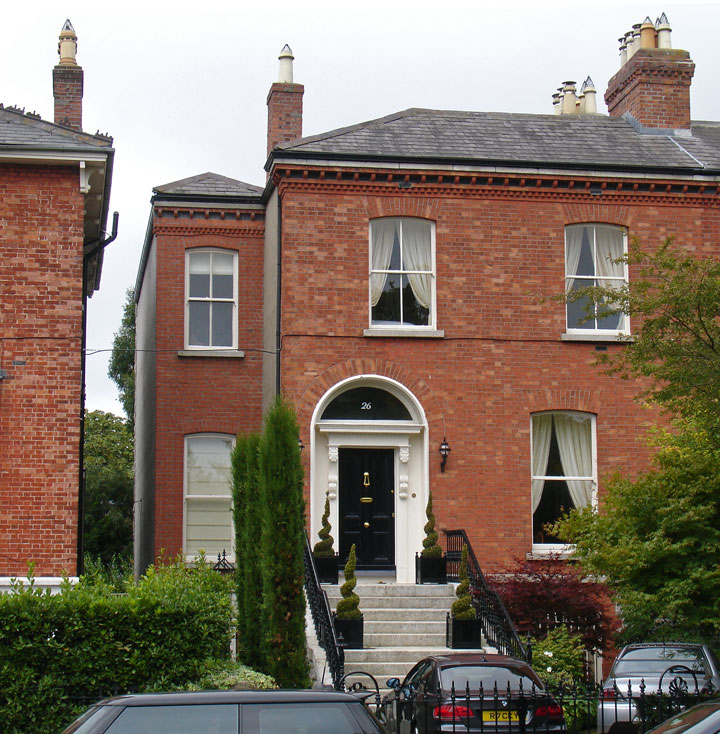
The artist Mainie Jellett lived at No 36, on the west side and William Dargan, the railway designer and Founder of the National Gallery , lived at No 2, on the east. On the corner of the square as you return to Fitzwilliam Street is No 18, once the studio of the artist Jack B. Yeats and Fitzwilliam House at No 6 was for some years the home of Margaret Burke Sheridan,the Irish prima donna famous for her renditions of Puccini's work. Off the square is Fitzwilliam Place. The geologist, Sir Richard Griffith lived at No 2 and the naturalist, Robert Lloyd Praeger at No 19. No 28, with its curious neo-gothic design, was the city home of Edward Martyn, the playwright who was a co-founder of the Abbey Theatre. Other famous names associated with FitzWilliam Square and the surrounding area include Oscar Wilde, Daniel O’Connell, W. B. Yeats, Charles Stewart Parnell, and many other irish luminaries. These days the residents are more apt to be doctors, insurers and web designers, as most of the buildings are now occupied by prominent and pre-eminent companies.

The English poet Thackeray once spoke enthusiastically of this little square - calling it a noble place, "the garden of which is full of flowers and foliage; the leaves are green, and not black, as in similar places in London. The red-brick houses," he adds, "are handsome."
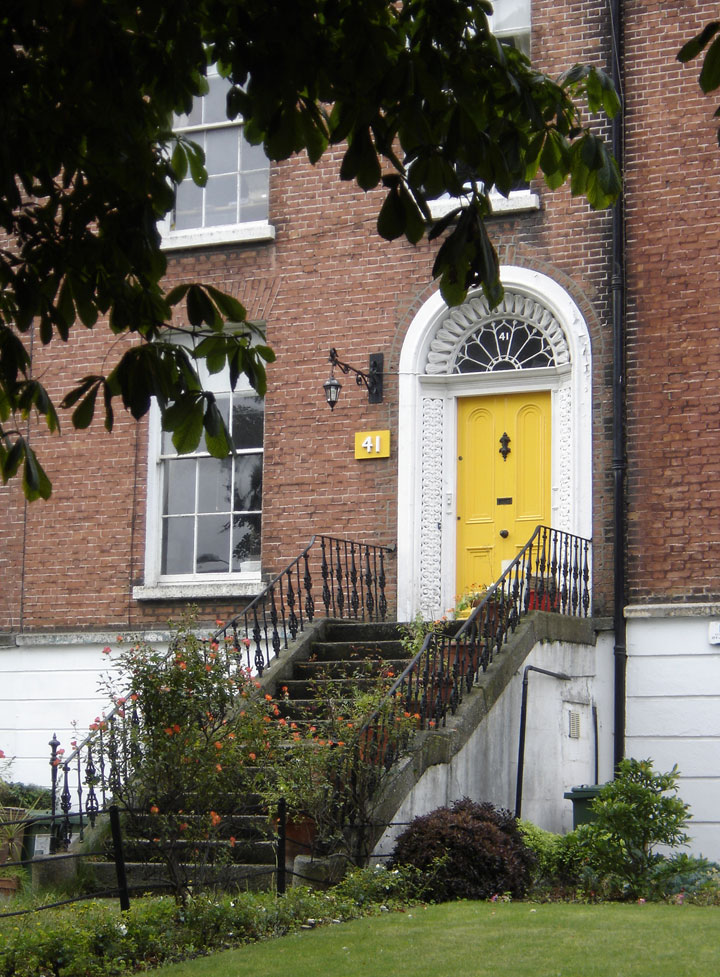
When George IV visited Dublin in
1821, he praised the beauty of all the squares although at that time the exodus
of the nobility from Dublin had begun to materially affect the classier
locations in the city. In connection with the King's admiration the following
lines appeared in a street ballad of the time:
“Twas how he thought each scene so fair,
'Twas how he praised each street and square,
'Tis a pity people don't live there,
Oh wirra-sthrew!”
Text from Irish Georgian Society by Bridget Haggerty
